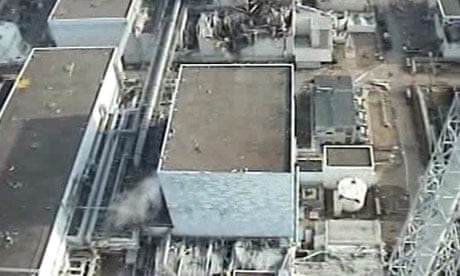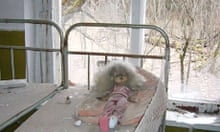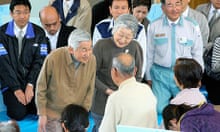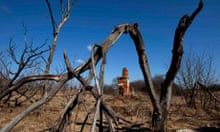What is the severity level?
The International Atomic Energy Agency's (IAEA) international nuclear and radiological event scale ranks nuclear and radiological accidents and incidents by severity from one to seven. Until now, the 1986 Chernobyl accident was the only nuclear accident to have been rated a level seven event, which the IAEA describes as "a major release of radioactive material with widespread health and environmental effects requiring implementation of planned and extended countermeasures". Officials from Japan's nuclear and industrial safety agency (Nisa) estimate that the amount of radioactive material released to the atmosphere from Fukushima is much less than Chernobyl. A spokesman for Nisa said the new ranking did not mean the Japanese plant posed the same threat to public health or involved similarly big releases of radiation as the Chernobyl disaster.
What is the main difference between the two accidents?
At Chernobyl, explosions destroyed a reactor, releasing a cloud of radiation that contaminated large areas of Europe. At Fukushima, which was damaged by an earthquake, the reactors still have mostly intact containment vessels surrounding their nuclear cores. Japanese officials point out that at Chernobyl, the reactor itself exploded while still active. At Fukushima, the magnitude nine earthquake and tsunami crippled the plant's cooling system, leading to a partial meltdown of the reactor. Earlier attempts to cool the reactor by hosing water from fire engines and helicopters left pools of contaminated water and flooded basements, hampering the containment operation and efforts to restart the cooling pumps. To make room for more highly radioactive liquid, the plant's operator, Tokyo Electric pumped tonnes of contaminated water into the Pacific but stopped after the move was criticised by South Korea. Tokyo Electric appears to be no closer to restoring cooling systems at the reactors, critical to lowering the temperature of overheated nuclear fuel rods.
How much radioactive material has been released at Fukushima?
Japan's nuclear safety commission has estimated that the Fukushima plant's reactors had released up to 10,000 terabecquerels of radioactive iodine-131 per hour into the air for several hours after they were damaged in the 11 March earthquake and tsunami. It said emissions since then had dropped to below one terabecquerel per hour, adding that it was examining the total amount of radioactive materials released. A terabecquerel equals a trillion becquerels, a measure for radiation emissions. The government says the Chernobyl incident released 5.2m terabecquerels into the air about 10 times that of the Fukushima plant.
What were the effects of Chernobyl?
Fifty emergency rescue workers died from acute radiation syndrome and related illnesses, 4,000 children and adolescents contracted thyroid cancer, nine of whom died. More than 100,000 people were immediately evacuated, and the total number of evacuees from contaminated areas eventually reached 350,000. The explosions that destroyed the unit four reactor core released a cloud of radionuclides, which contaminated large areas of Europe and, in particular, Belarus, the Russian Federation and Ukraine, and affected livestock as far away as Scandinavia and Britain. Hundreds of thousands of people were exposed to substantial radiation doses, including workers who took part in efforts to mitigate the consequences of the accident. The IAEA said the situation had been made worse by conflicting information, exaggeration in press coverage and pseudoscientific accounts of the accident reporting, for example, fatalities in the tens or hundreds of thousands.
What have been the effects so far at Fukushima?
The death toll from the tsunami is more than 13,000, but no radiation-linked deaths have been reported and only 21 plant workers have been affected by minor radiation sickness, according to Japanese officials. About 70,000 people living within a 12-mile radius of the plant have been evacuated, while 130,000 living between 12 and 20 miles from the plant have been told to leave voluntarily or stay indoors. The government's chief spokesman, Yukio Edano, said the current evacuation zone would be extended to five other communities, including the village of Iitate, which lies 25 miles from the plant. Some experts have criticised the raising of the severity level. "I think raising it to the level of Chernobyl is excessive," said Murray Jennex, associate professor at San Diego state university. "It's nowhere near that level. Chernobyl was terrible – it blew and they had no containment and they were stuck. Their [Fukushima] containment has been holding, the only thing that hasn't is the fuel pool that caught fire."






